(This post available as a PDF document here: http://www.hackneys.com/docs/6lessons.pdf )
I learned six lessons today.
The lessons came from over the bridge.
(click on photos for larger image)
Lesson One: What goes up, often comes down.
We’ve had a long, good run around this part of the world, but now we’re in a downward portion of the cycle. If we don’t pull up, we (and that’s not the royal we, that’s the collective we, as in you and me and just about everyone else you know) will, in aviation terms, “auger in.” That means we’ll “buy the farm.” That means that if we don’t get it together and turn things around, it’s going to get a whole lot worse before it gets any better.
Lesson Two: Collective fate.
| It doesn’t matter too much if one of us is able to level off. | ||
|
Lesson Three: The cost of anarchy.
Everybody being able to do their own thing in their own way with no consideration of what the impact is on anyone else sounds great in the abstract. That type of thinking makes a lot of sense when you don’t have anything to lose or you just don’t give a damn.
But, if you’ve got something to lose, and the anarchic actions of someone else around you can not only cause you to lose everything you’ve got, but also cause them to lose everything they’ve got, then it doesn’t make any sense at all.
Lesson Four: The cost of partisanship.
The chances of getting anything done when half of the people are aligned exactly opposite of the other half is exactly zero. If all you want to do is be exactly opposite, exactly opposed, to whatever the other half is attempting to achieve, then collective progress is exactly zero.
When the collective formation is heading into the ground, being intent on being opposed does not help the overall goal of life, liberty and the pursuit of happiness. All it does is guarantee that everyone will auger in at more or less the same time.
Lesson Five: Success requires cooperation.
If you want to keep things in the air, then you need to keep an eye on what the overall priorities are—keeping things in the air—and cooperate with who is up in the air with you.
That’s the only way you keep things moving forward.
And return them to an upward trajectory.
Lesson Six: Things are much closer than they appear.
Those who promote diametrically-opposed partisanship or knee-jerk, tangential flight to any other-tribe objective often claim that all obstacles or imminent threats are a long ways away.
They say there is plenty of time to correct the collective downward trajectory once they seize total control before anybody, much less everybody, augers in.
But in reality, everything, especially the existential threats, are much closer than you’ve been led to believe.
That means all of us, regardless of race, creed, passion or politics, better wake up and smell the jet fuel.
If we don’t, we’re all going to collectively meet the angels a lot sooner than we’d prefer.
* * * * * * *
Just like the people of the United States, the Blue Angels team consists of men and women of many different races, origins, beliefs and interests. The Blue Angels demonstrate what is possible when people of many different races, origins, beliefs and interests work together to achieve a common goal.
* * * * * * *
The Navy Blue Angel flight demonstration squadron flies Boeing F/A-18 Hornet aircraft.
The Blue Angels performed their first flight demonstration in June 1946.
The name was created by the original team when planning a show in New York City in 1946. The name was discovered when one of the original team members noticed mention of the city’s famous Blue Angel nightclub in the New Yorker Magazine.
In 2009 the Blue Angels performed for more than 8 million spectators. Since 1946, the Blue Angels have performed for more than 463 million spectators.
More information on the Blue Angels is available here: http://www.blueangels.navy.mil/index.htm
* * * * * * *
All photographs by Stephanie Hackney



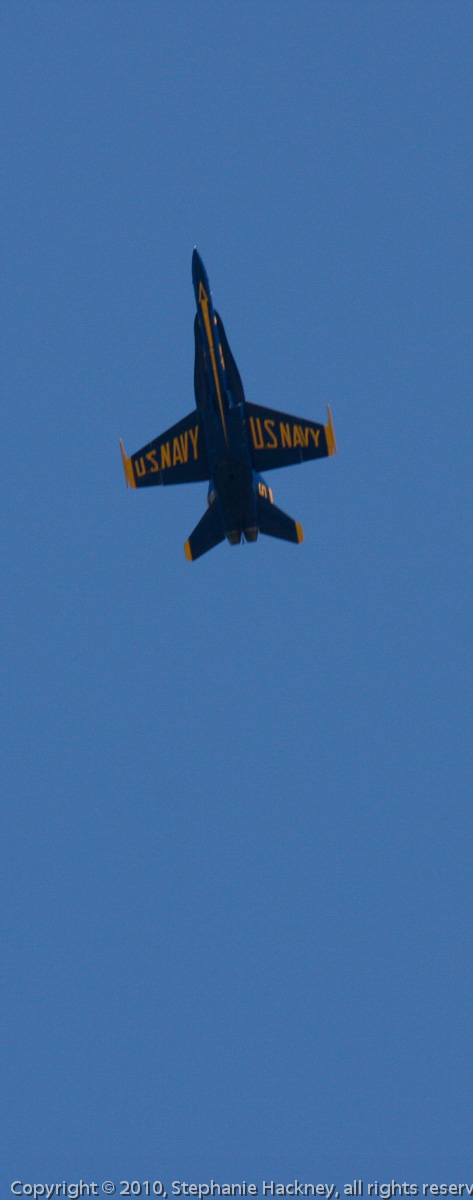

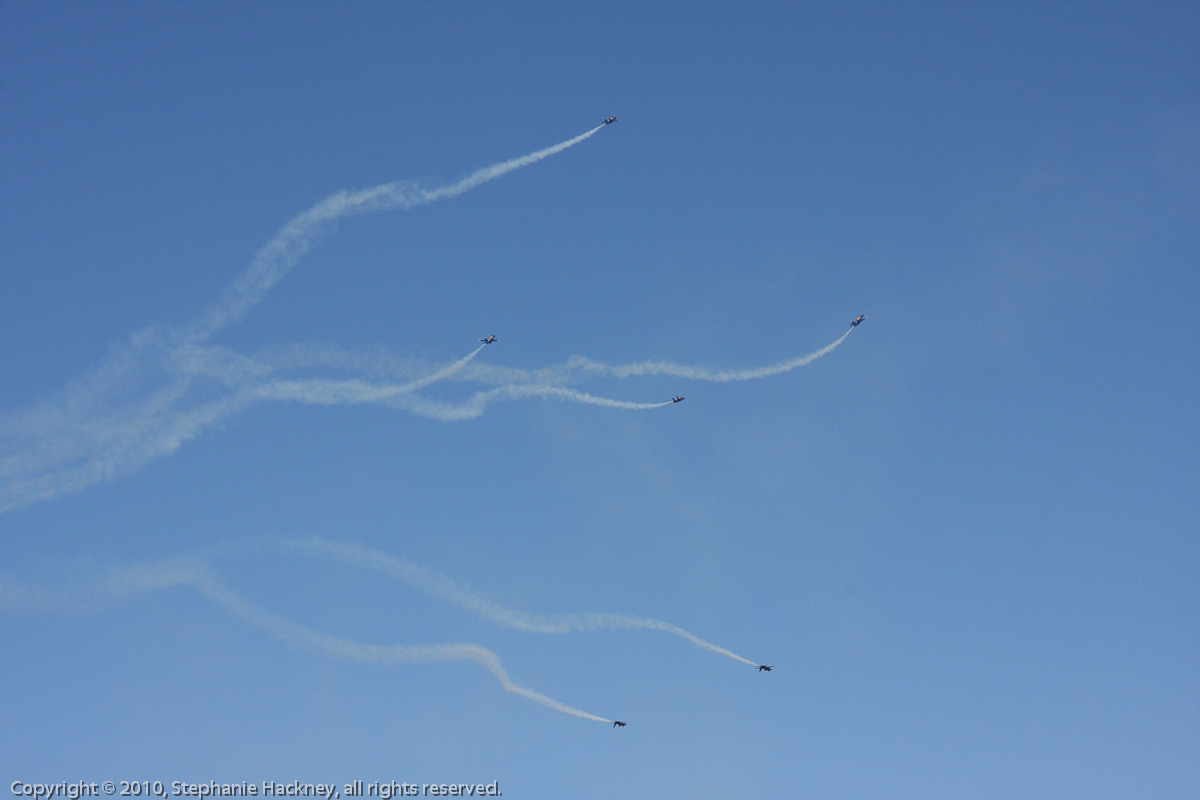
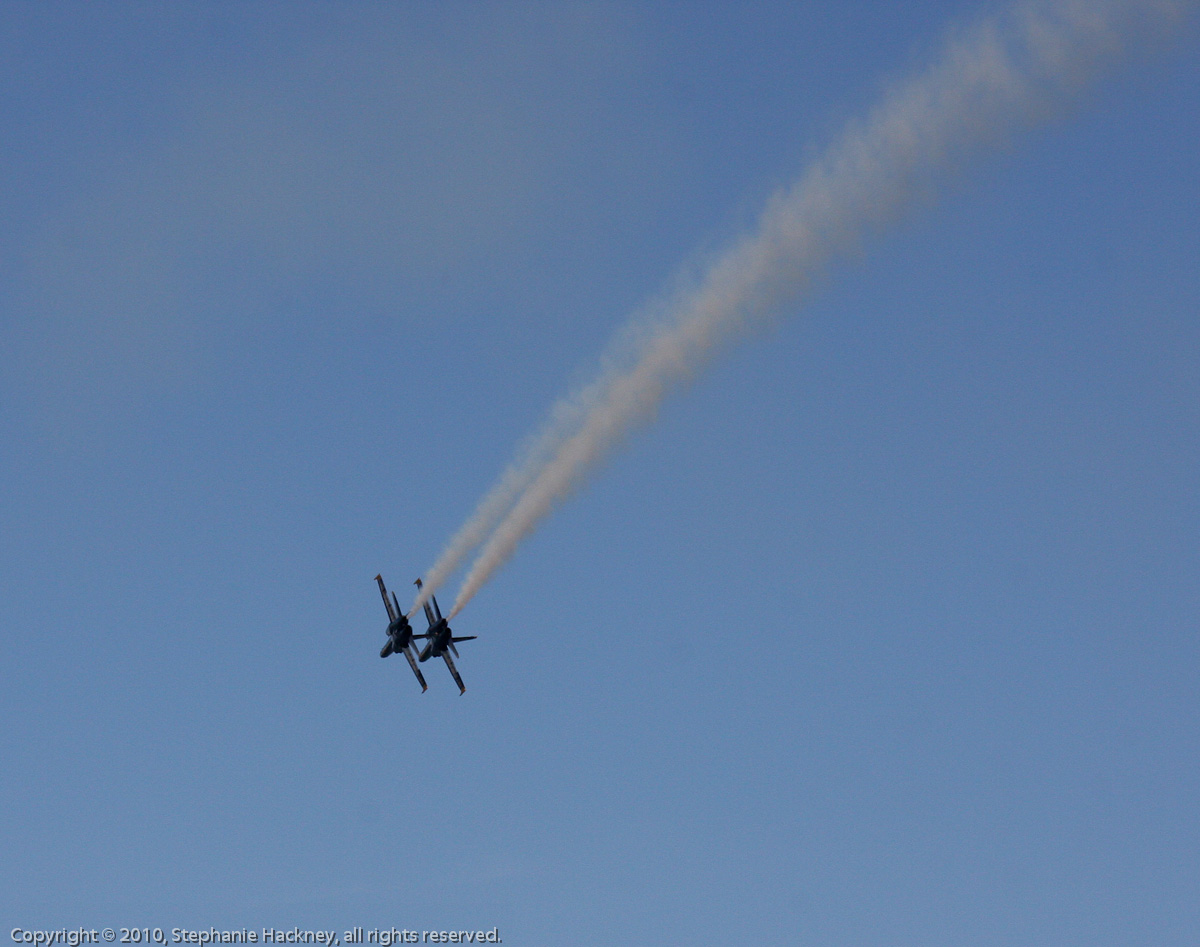
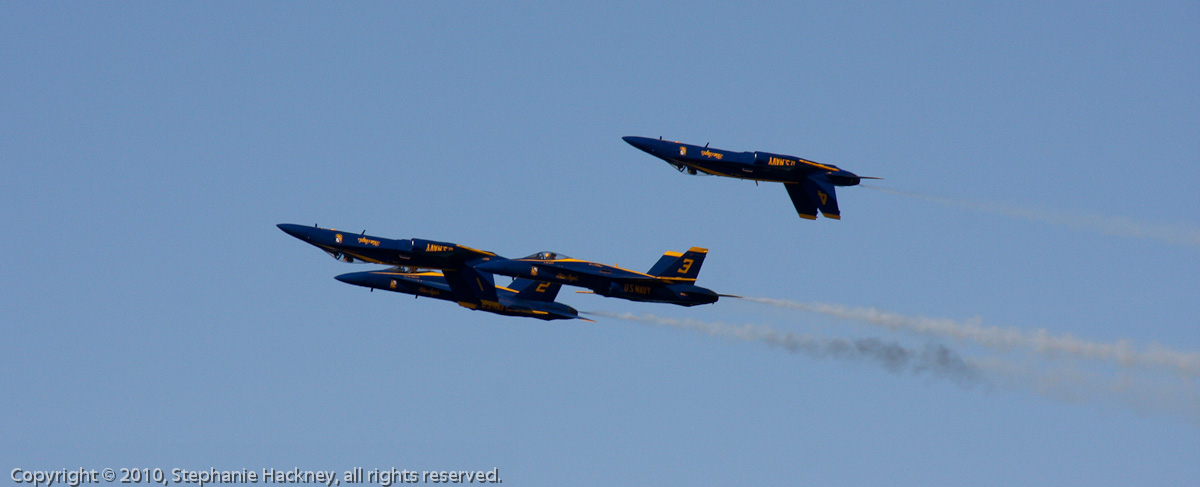
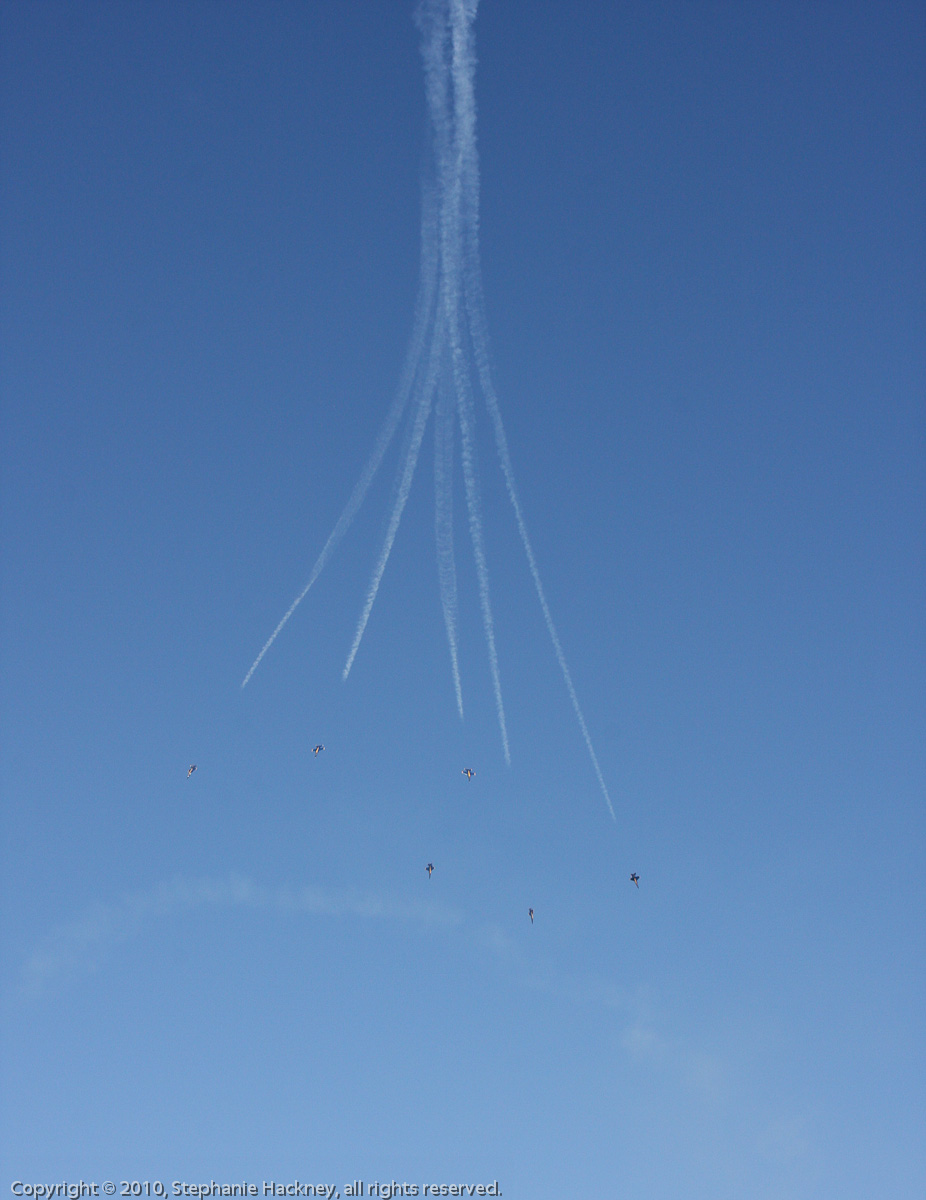


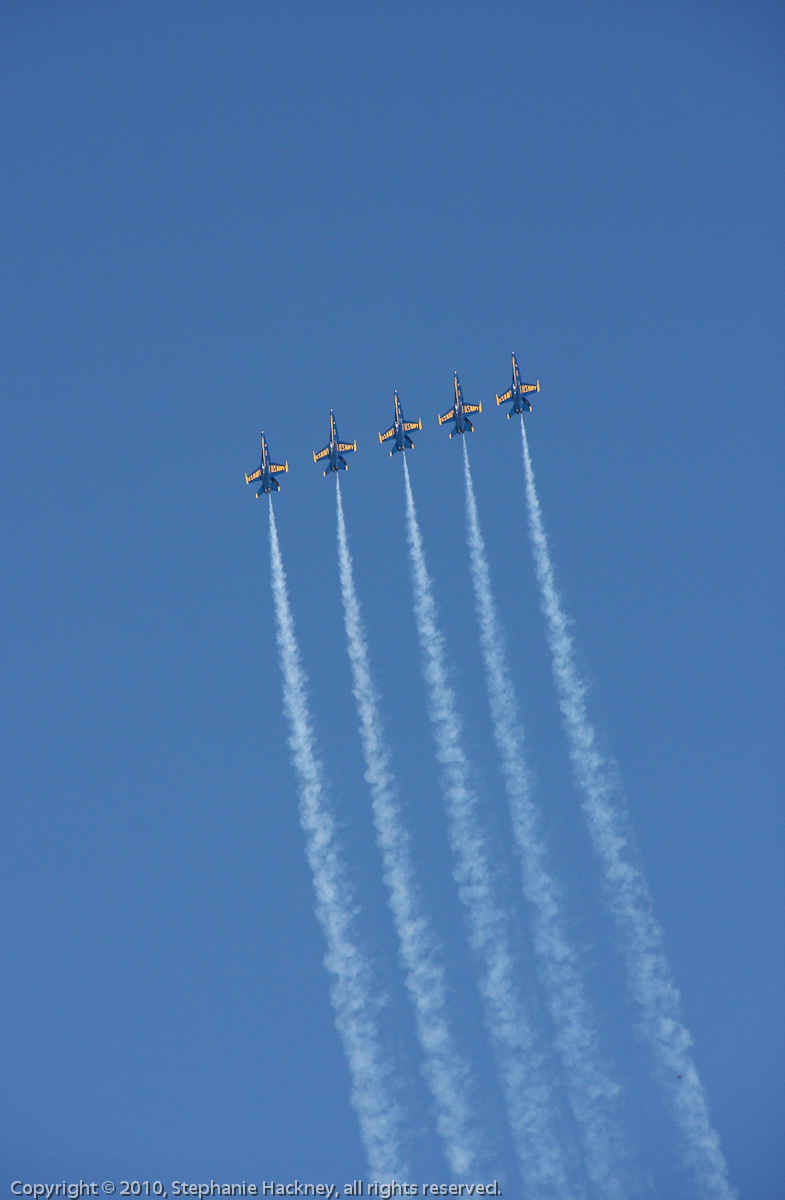
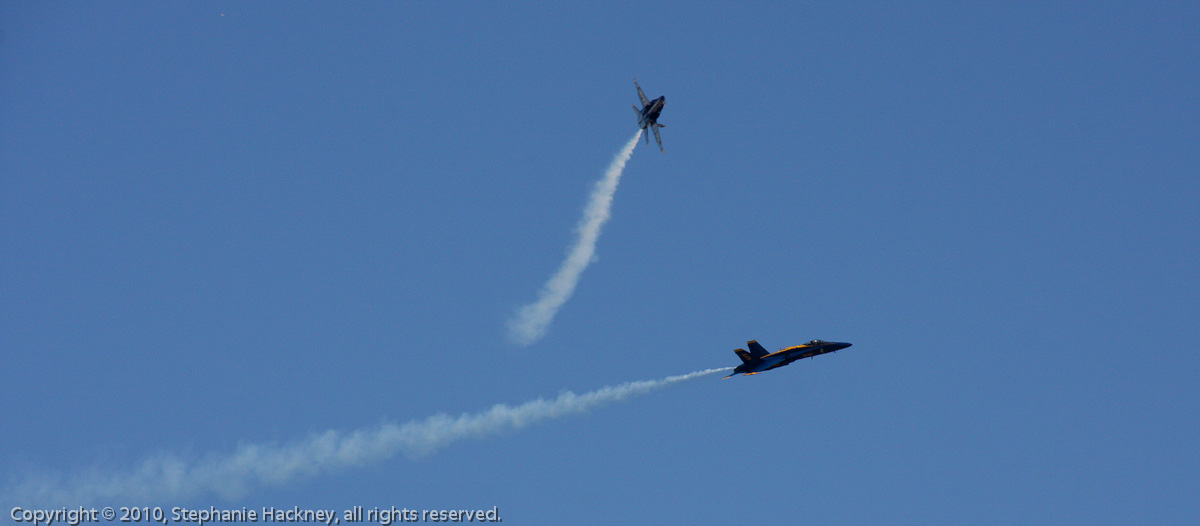

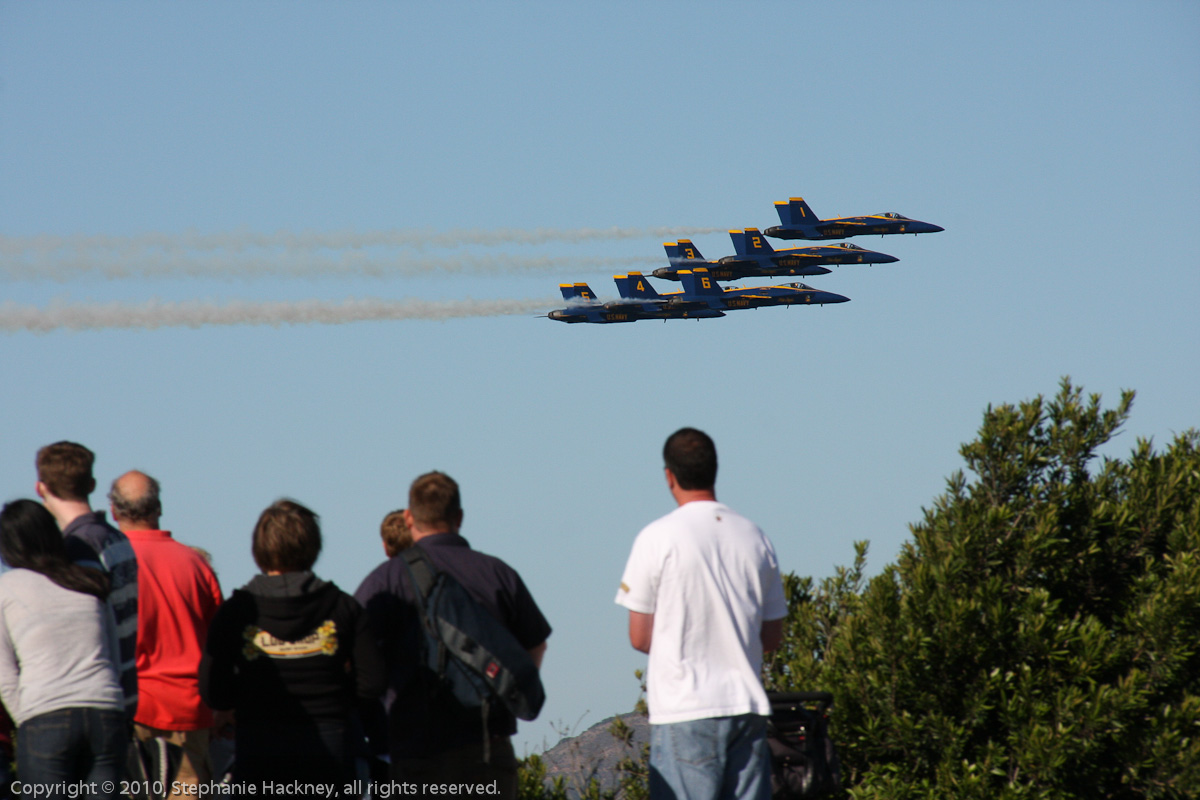

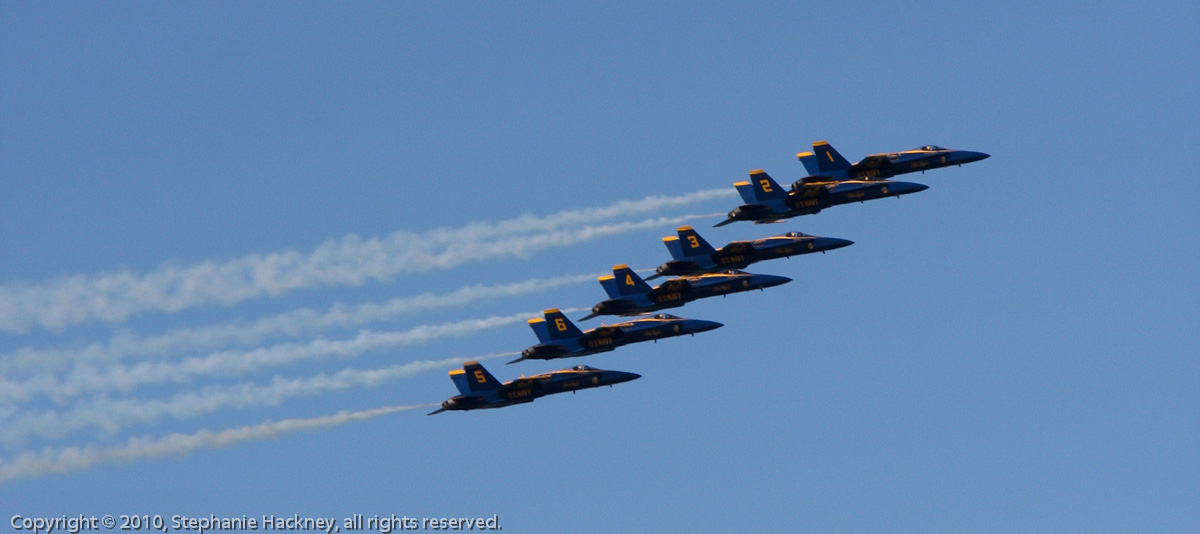
Pingback: Autopsis » Blog Archive » Comments on Six Lessons